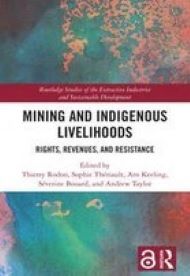Comparative perspectives on the social aspects of mine closure and mine site transition in Canada and Australia
In response to the growing recognition of mine closure as a unique phase of the mining cycle, increasing scholarly, industry, and regulatory attention is being focused on the social and economic dimensions of mine site transitions. Recent best practice statements and guideline documents promote “integrated closure planning” as an approach to mine closure that includes both environmental and socioeconomic objectives. In spite of these commitments, in many jurisdictions the regulatory framework around closure planning neglects or overlooks the necessity for socioeconomic plans or lacks clear objectives for social outcomes. This gap inhibits the ability of industry and communities to adequately account for and mitigate the often devastating socioeconomic effects of mine closure, and integrate community objectives for mine site transitions. In this chapter, we compare approaches to mine closure regulations in three jurisdictions—Queensland and the Northern Territory in Australia, and Nunavik (Northern Québec) in Canada—to assess whether and how regional authorities address the social aspects of mine closure and mine site transitions, including economic and cultural impacts and post-mining land use. In particular, we focus on barriers and opportunities for local and Indigenous community participation and highlight emerging practices of community engagement in mine closure and transition planning. This comparison highlights the factors that shape the approach in these jurisdictions, including governance structures, Indigenous rights, negotiated agreements, and the scale and scope of mineral development activities.
Language: English
Publisher: Mining and Indigenious Livelihoods, Routledge
Region: Global
Type: Book Chapter
CITATION
Holcombe, S., Worden, S., & Keeling, K. (2024). Comparative perspectives on the social aspects of mine closure and mine site transition in Canada and Australia in T. Rodon, S. Thériault, A. Keeling, S. Bouard & A. Taylor (Eds.), Mining and Indigenous Livelihoods: Rights, Revenues, and Resistance. London, UK: Routledge.
https://doi.org/10.4324/9781003406433

